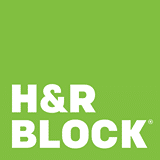


By Joe Waters, Guest Contributor, Selfish Giving
More than ever, brands have embraced cause marketing as a powerful way to support causes while building loyalty with existing and potential customers. The “Mother of Cause Marketing,” Carol Cone, famously called cause marketing the “little black dress” that belongs in every brand’s closet. It’s one that brands are wearing more often. From transactional programs at the register to digital programs involving hashtags and smartphones, brands are raising money and building awareness for causes.
They are also boosting the bottom line.
“Our cause-related efforts contribute between 25 to 35 percent to the success of our company,” said Dave Altmann, Senior Vice President of Strategic Initiatives at Jersey Mike’s, on a recent episode of CauseTalk Radio. Jersey Mike’s is a sub sandwich franchise with 1,500 stores open and under development nationwide.
A growing area of cause marketing is cause-related content—brands creating content marketing programs that are a win for the cause and for the brand.
Here are three examples of brands that are doing good and well with cause-related content.
Columbia Sportswear
Park rangers have a saying about the people they meet in the national parks: They’re newlyweds or nearly deads. Sightings of Millennials in national parks are rarer than Bigfoot. You also won’t find much diversity in those multi-colored tents. A vacationing reporter was so stunned to find a group of Latino bloggers camping he wrote an article on it for the New York Times.
But those bloggers weren’t there by chance. They were sent by Columbia Sportswear. In a partnership with REI and the National Park Foundation (NPF) a group of top Latino bloggers were immersed in a week-long trip to national parks. The bloggers’ reports on their experience generated over 60 million impressions for Columbia and NPF in 2013.
“We’ve only begun to track the impact of Find Your Park for the Columbia brand,” explained Scott Welch, Global Corporate Relations Manager at Columbia Sportswear Company. “But we do know that Millennials and National Parks are critical to our business and to our country. This program addresses both.”
Fast-forward to today, and the partnership now includes Subaru, Aramark and Southwest Airlines. The Find Your Park outing is now the grand prize of a popular contest for diverse millennial influencers that includes bloggers, YouTube phenoms, business owners and TV personalities.
H&R Block
Just as everyone needs to file a tax return every year, everyone needs to know something about budgeting and financial planning. The problem is they don’t, and teens especially are not equipped with the skills they need to manage their personal finances.
That’s why in 2009 tax preparation service H&R Block launched Dollars and Sense to help teachers tackle financial fitness in the classroom through a series of comprehensive lesson plans and student activities. Dollars and Sense culminates with the The H&R Block Budget Challenge, an online game that simulates real life as an adult: paying bills, managing expenses, saving money, investing in retirement, paying taxes and more. Participants play classroom against classroom and students against students to win $3 million in grants and scholarships.
H&R Block believes they are serving an unmet need by providing teachers with resources to educate teens on personal finance. But for the tax prep company there’s another key target audience: parents. Teens rely on their parents for money and financial advice. Dollars & Sense has given H&R Block an opener to lead a conversation between two groups that are the present and future of the company’s success.
Patagonia
For a brand that wants to be known for its anti-growth strategy, clothing maker Patagonia has nonetheless seen surging sales from its Don’t Buy This Jacket promotion.
First launched in 2011, the promotion encourages consumers to mend their current jacket instead of buying a new one. Patagonia even hosts “fixit” days to expedite repairs.
What started as a seasonal promotion has grown into the Worn Wear, a program that uses cause content to promote reuse and sustainability. Among its other assets, the brand has a dedicated Instagram account for Worn Wear and publishes instruction guides for repairing Patagonia products.
Patagonia also has an active YouTube channel that features original documentary shorts entitled Stories We Wear. The most recent episode follows Scottish climber Sean Villanueva O’Driscoll who talks about the clothes he’s repaired while traveling the world.
Patagonia may be the only brand in the world that generates sales by discouraging them. But this is no sales trick. The brand’s content marketing efforts show its deep commitment to creating a more sustainable world. Customers agree.
All three of these brands demonstrate a long-term commitment to cause-related content strategies. The business benefits often exceed short-term revenue goals and translate into expanded brand awareness and enduring customer relationships.

Leave a Reply